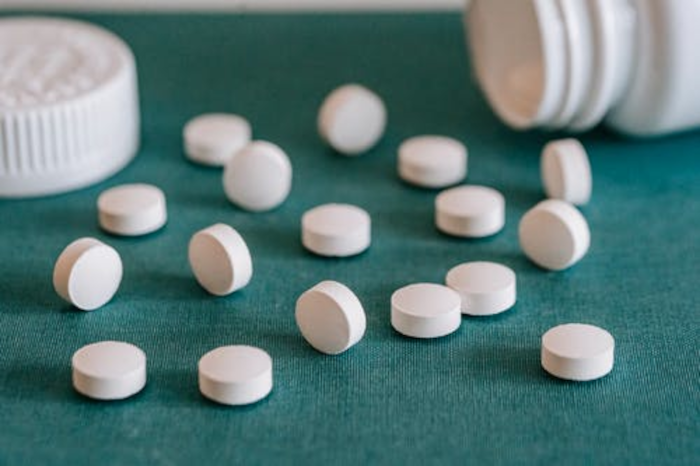How Long is Suboxone Half Life?
Suboxone is the brand name for a prescription medication that is designed to treat opioid addiction. It’s typically used in the management of opioid abuse and withdrawal. It is classified as a Schedule III controlled substance in the United States, meaning it’s a drug deemed to have a medical value yet also carries a moderate risk for addiction [1]. Therefore, only doctors who receive certifications from the Department of Health and Human Services may prescribe Suboxone. This medication is manufactured as dissolvable films (Suboxone strips) and tablets. Suboxone and Methadone are both commonly used FDA-approved medications that are used to treat opioid addiction.
Many people who take Suboxone are concerned with how long it will stay in their system. The length of time that the drug will stay in your system depends on several factors, but one of the biggest determining factors is its half-life. Suboxone has two ingredients: the opioid Buprenorphine and the medication Naloxone. The main ingredient in Suboxone, buprenorphine, has an especially long elimination half-life compared to other opioids. Elimination half-life refers to how long it takes for half of a single dose of a drug to leave the body. The half-life of buprenorphine is 24 to 42 hours.

It takes your body almost two full days to excrete 50% of the buprenorphine in a dose of Suboxone. Since it takes five half-lives for a drug to completely leave your system, it can take almost nine days for a single dose of Suboxone to be cleared from your body. When your body starts to break down buprenorphine, the drug is metabolized into a substance called norbuprenorphine. This substance has a much longer half-life than buprenorphine, up to 150 hours.
Further, norbuprenorphine can be found in your urine for up to 14 days. Naloxone, the other ingredient in Suboxone, has a half-life of 2 to 12 hours. In turn, it can stay in your body for up to 60 hours. As naloxone is not a drug of abuse, doctors do not typically test for naloxone exposure.

Get Your Life Back
Find Hope & Recovery. Get Safe Comfortable Detox, Addiction Rehab & Dual Diagnosis High-Quality Care.
Hotline(844) 597-1011How Long Does Suboxone Take to Work?
Suboxone starts working in 30 to 60 minutes. Once a person has reached the right dosage, the effects of Suboxone should continue for 47 to 72 hours. Most people will feel the effects within the hour, though for some it may take longer depending on their specific body and history of drug abuse. After the first dose of Suboxone, symptoms of opioid withdrawal should begin to subside quickly and the person using it should start to feel much better.
Suboxone is available as a film or a tablet, and both are dissolved under the tongue. The combination of buprenorphine and naloxone is also sold under the brand names Zubsolv and Bunavail. Generic equivalents are also available. The dosages range from 2 mg buprenorphine and 0.3 mg naloxone to 24 mg buprenorphine and 6 mg naloxone. There is no demonstrated clinical advantage to dosages higher than that.
Get Help. Get Better. Get Your Life Back.
Searching for Accredited Drug and Alcohol Rehab Centers Near You?
Even if you have failed previously and relapsed, or are in the middle of a difficult crisis, we stand ready to support you. Our trusted behavioral health specialists will not give up on you. When you feel ready or just want someone to speak to about therapy alternatives to change your life call us. Even if we cannot assist you, we will lead you to wherever you can get support. There is no obligation. Call our hotline today.
(844) 597-1011
What are Suboxone Strips?
Suboxone strips or sublingual films are administered by either placing them under the tongue or the inner cheeks until it is completely dissolved. These strips generally take around six to 10 minutes to dissolve completely. If two strips are taken, the films should be placed on opposite sides under the tongue or inner cheeks without overlapping them.
Suboxone sublingual film strips should not be chewed or swallowed whole. Doing so will not generate the desired effects as they are not designed to be split or broken. Suboxone films should also not be taken with benzodiazepines, alcohol, or other substances. People who take Suboxone with such substances are at higher risk of experiencing serious health effects, including overdose death.
Suboxone sublingual film strips should not be chewed or swallowed whole. Doing so will not generate the desired effects as they are not designed to be split or broken. Suboxone films should also not be taken with benzodiazepines, alcohol, or other substances. People who take Suboxone with such substances are at higher risk of experiencing serious health effects, including overdose death.
How Long Do Suboxone Strips Stay in Your System?
The half-life of Suboxone’s active ingredient, buprenorphine, is estimated to be around 37 to 42 hours. Since it takes around five half-lives for a substance to completely leave the body, it may take around seven to nine days for buprenorphine to leave the body completely. However, as the liver breaks down buprenorphine into metabolites called norbuprenorphine with an estimated half-life of up to 150 hours, buprenorphine can remain detectable in the body for up to two weeks after the last dose.
The naloxone in the medication has a half-life of around two to 12 hours. Thus, it can stay in the body for up to 60 hours, although it generally clears well before buprenorphine.
Suboxone generally takes seven to nine days to leave the body completely. However, this may differ from person to person based on factors such as:
- Age
- Weight
- Metabolism Speed
- Frequency of Suboxone use
- Suboxone dosage
- Liver health
First-class Facilities & Amenities
World-class High-Quality Addiction & Mental Health Rehabilitation Treatment
Rehab Centers TourRenowned Addiction Centers. Serene Private Facilities. Inpatient rehab programs vary.
Addiction Helpline(844) 597-1011Proven recovery success experience, backed by a Team w/ History of:
15+
Years of Unified Experience
100s
5-Star Reviews Across Our Centers
10K
Recovery Success Stories Across Our Network
- Low Patient to Therapist Ratio
- Onsite Medical Detox Center
- Comprehensive Dual-Diagnosis Treatment
- Complimentary Family & Alumni Programs
- Coaching, Recovery & Personal Development Events
Does Suboxone Show Up in Saliva Test?
Drug testing is something that a person may undergo in several scenarios. A drug test may be requested while interviewing for a new job, randomly throughout employment, as part of medical treatment, or before or after a criminal conviction.
Even though Suboxone is a prescription medication, there are reasons people could be concerned about it showing up on a drug test. It could be that they don’t want their employers to know they’re on a medication designed to help with opioid dependence.
Saliva drug tests use a sample of someone’s saliva to test for certain drugs in the body. This type of test is sometimes called a mouth swab test or oral drug test. A mouth swab drug test is one of the most convenient and least invasive screening methods for detecting substances in someone’s system.
A saliva test can detect Suboxone up to three to 10 days after use. This type of test is non-invasive and easy to administer and is a commonly used method of drug testing. A saliva test can detect buprenorphine within a few minutes of use.

World-class, Accredited, 5-Star Reviewed, Effective Addiction & Mental Health Programs. Complete Behavioral Health Inpatient Rehab, Detox plus Co-occuring Disorders Therapy.
CALL(844) 597-1011End the Addiction Pain. End the Emotional Rollercoaster. Get Your Life Back. Start Drug, Alcohol & Dual Diagnosis Mental Health Treatment Now. Get Free No-obligation Guidance by Substance Abuse Specialists Who Understand Addiction & Mental Health Recovery & Know How to Help.
Does Suboxone Show Up on a Urine Test?
Suboxone is detectable in urine for up to six days. Urine tests are one of the most common types of tests because they are simple and inexpensive. It takes less than an hour for buprenorphine to become detectable in urine. In some heavy use cases, it might show up two weeks after the last use.
Does Suboxone Show Up on a Hair Test?
A hair test is one of the rarest types of drug tests. It requires a complicated technical analysis but it can detect Suboxone for up to 90 days after use. Hair follicle tests produce more accurate results than testing urine or blood. It also offers a more comprehensive view of whether or not someone is a Suboxone user.
Blood Test for Suboxone Levels
Blood tests also detect Suboxone, but they are more invasive and not used as frequently. Suboxone stays in the blood for up to two days after use but is most detectable within two to 12 hours after the last dose.
Can You Get Addicted to Suboxone?
Are people in recovery from opioid addiction at risk of becoming addicted to Suboxone? If so, how can they stop this from happening? Is Suboxone addiction better than opioid addiction, or is it almost the same thing? Is the risk high enough to avoid Suboxone, even if it might save your life?

Suboxone can be taken in tablet or film form. In both cases, the drug is dissolved in the patient’s mouth and absorbed directly into the bloodstream. This type of administration creates the option for users to take it themselves at home, instead of forcing them to visit a clinic each day for their treatment as in the case of methadone.
Even with the many benefits of Suboxone in addiction treatment, this prescription drug is not without risks. People struggling with opioid use disorder may take Suboxone in higher-than-recommended doses, without a prescription, or via alternative methods such as snorting in an attempt to experience a high similar to other opioids. Snorting a drug like Suboxone can lead to an increased risk of unwanted side effects and addiction development.
Suboxone Addiction Treatment
Deciding to go into Suboxone detox on your own is a big risk. However, with support from a medical detox center, you enjoy the care and comfort of professionals who understand the recovery process. Also, you receive complete nutrition, hydration, and medications for your Suboxone detox withdrawal symptoms. Even more, an inpatient treatment program eases the process and improves your health simultaneously.
Upon entering a medically-assisted Suboxone detox facility, an assessment test and health review will take place to develop a proper treatment plan. For your best care, it’s important to provide correct details of your drug history, health, and other issues impacting your life. Most importantly, medically-assisted Suboxone detox improves your life, so it’s best to begin in an honest state for a full recovery.
Medically-assisted Suboxone detox may concern tapering you off the drug. A specialist may prescribe medications to ease your Suboxone detox withdrawal symptoms and make the procedure more comfortable for you. Addiction specialists tailor your withdrawal process to your personal needs so you feel as comfortable as possible from start to end.
Support received in supervised Suboxone detox is quite helpful and safe. Qualified addiction professionals help you understand what to expect, helping you through your symptoms. The support of an inpatient treatment program is something you won’t get if you detox at home.
Detox Treatment
The first step in treatment is medical detox. It will help you navigate the complicated withdrawal process, but it doesn’t address patterns of thought and behavior that contribute to heroin abuse. Various treatment approaches and settings can help provide the ongoing support necessary to maintain long-term sobriety after you complete detox.
Cravings are very common during detox and can be challenging to overcome. This often leads to relapse. Constant medical care provided during inpatient treatment helps prevent relapse. Clinicians can provide necessary medication and medical expertise to lessen cravings and the effects of withdrawals.
Psychotherapy
Several different modalities of psychotherapy have been used in the treatment of depression, including:
- Cognitive Behavioral Therapy (CBT) – is an effective treatment that involves making changes in both the patterns of negative thoughts and the behavioral routines which are affecting the daily life of the depressed person for various forms of depression.
- Dialectical Behavior Therapy – is a comprehensive mental health and substance abuse treatment program whose ultimate goal is to aid patients in their efforts to build a life worth living. The main goal of DBT is to help a person develop what is referred to as a “clear mind.”
- Person-Centered Therapy – is a strategy that allows and encourages clients to understand and resolve their concerns in a safe, supportive environment.
Dual Diagnosis Treatment
Substance abuse and mental health disorders often co-occur. In many cases, traumatic experiences can result in a mental health disorder and substance abuse. Dual diagnosis programs treat both of these issues together. The best approach for the treatment of dual diagnosis is an integrated system. In this strategy, both the substance abuse problem and the mental disorder are treated simultaneously. Regardless of which diagnosis (mental health or substance abuse problem) came first, long-term recovery will depend largely on the treatment for both disorders done by the same team or provider.
Medication-Assisted Treatments
Medication-Assisted Treatments (MAT) for substance use disorders and mental health disorders are commonly used in conjunction with one another. This includes the use of medications and other medical procedures. During your rehab, the staff from your treatment facility will help you identify what caused your addiction and teach you skills that will help you change your behavior patterns and challenge the negative thoughts that led to your addiction. Sometimes, the pressures and problems in your life lead you to rely on substances to help you forget about them momentarily.
Now that we learned about the signs and symptoms of suboxone addiction, hopefully, this will give you an idea of what drugs you’re dealing with. If you or your loved one is addicted to suboxone, or suffering from opioid withdrawal symptoms, and at some point experienced opioid overdose symptoms, indeed, help is just a phone call away. Professional opioid addiction treatment is necessary for fast and effective recovery. Contact us today at We Level Up treatment facility. We provide utmost care with doctors and medical staff available 24/7 for life-changing and lasting recovery. We offer an enhanced opportunity to return to a fulfilling and productive life.

Experience Transformative Recovery at We Level Up Treatment Centers.
See our authentic success stories. Get inspired. Get the help you deserve.
Start a New Life
Begin with a free call to an addiction & behavioral health treatment advisor. Learn more about our dual-diagnosis programs. The We Level Up Treatment Center Network delivers recovery programs that vary by each treatment facility. Call to learn more.
- Personalized Care
- Caring Accountable Staff
- World-class Amenities
- Licensed & Accredited
- Renowned w/ 100s 5-Star Reviews
We’ll Call You
Sources
[1] DEA – https://www.deadiversion.usdoj.gov/schedules/
[2] SAMHSA – https://www.samhsa.gov/medication-assisted-treatment/medications-counseling-related-conditions/buprenorphine
[3] NIDA – https://archives.drugabuse.gov/buprenorphine
[4] NCBI – https://www.ncbi.nlm.nih.gov/books/NBK459126/
[5] Suboxone Detox – We Level Up NJ


